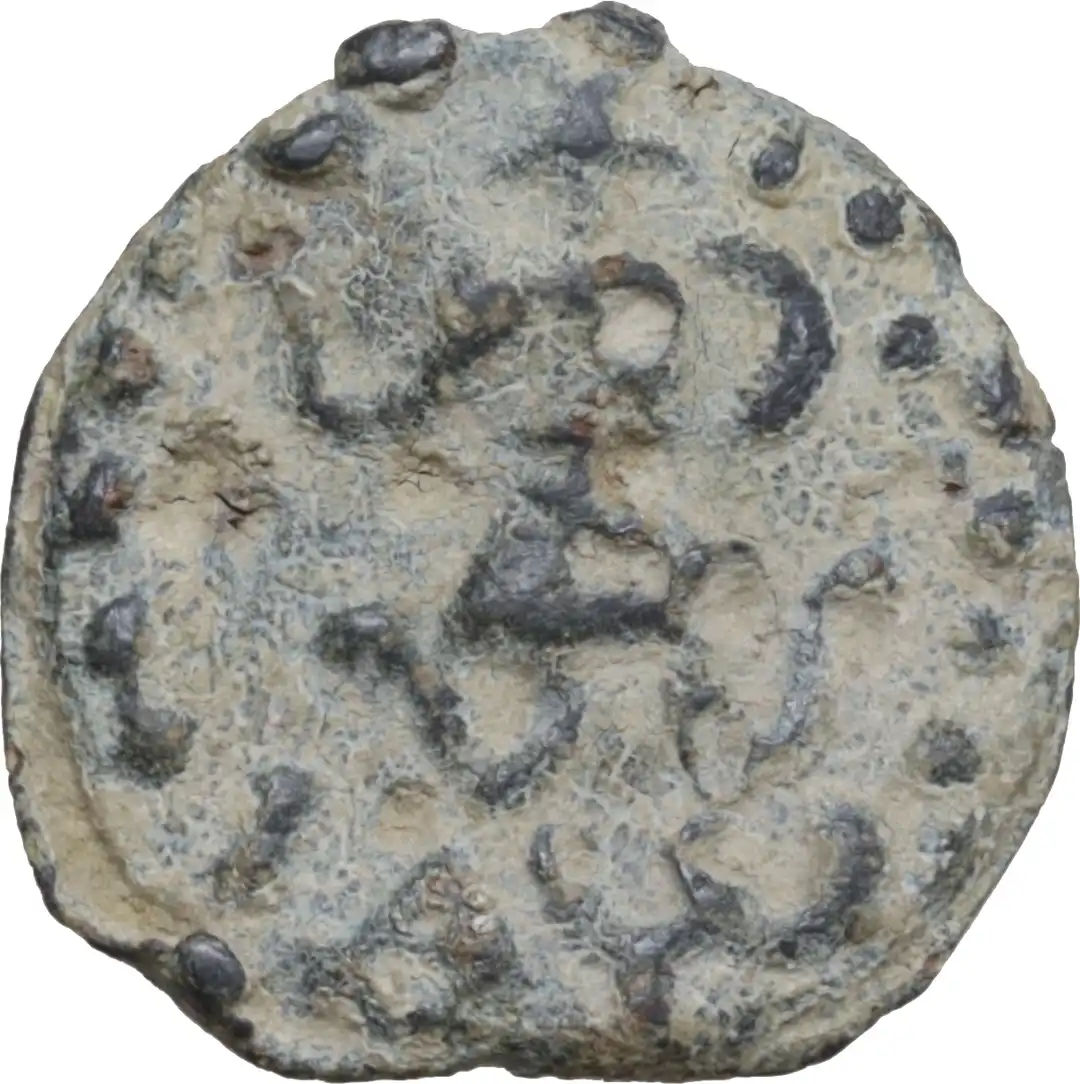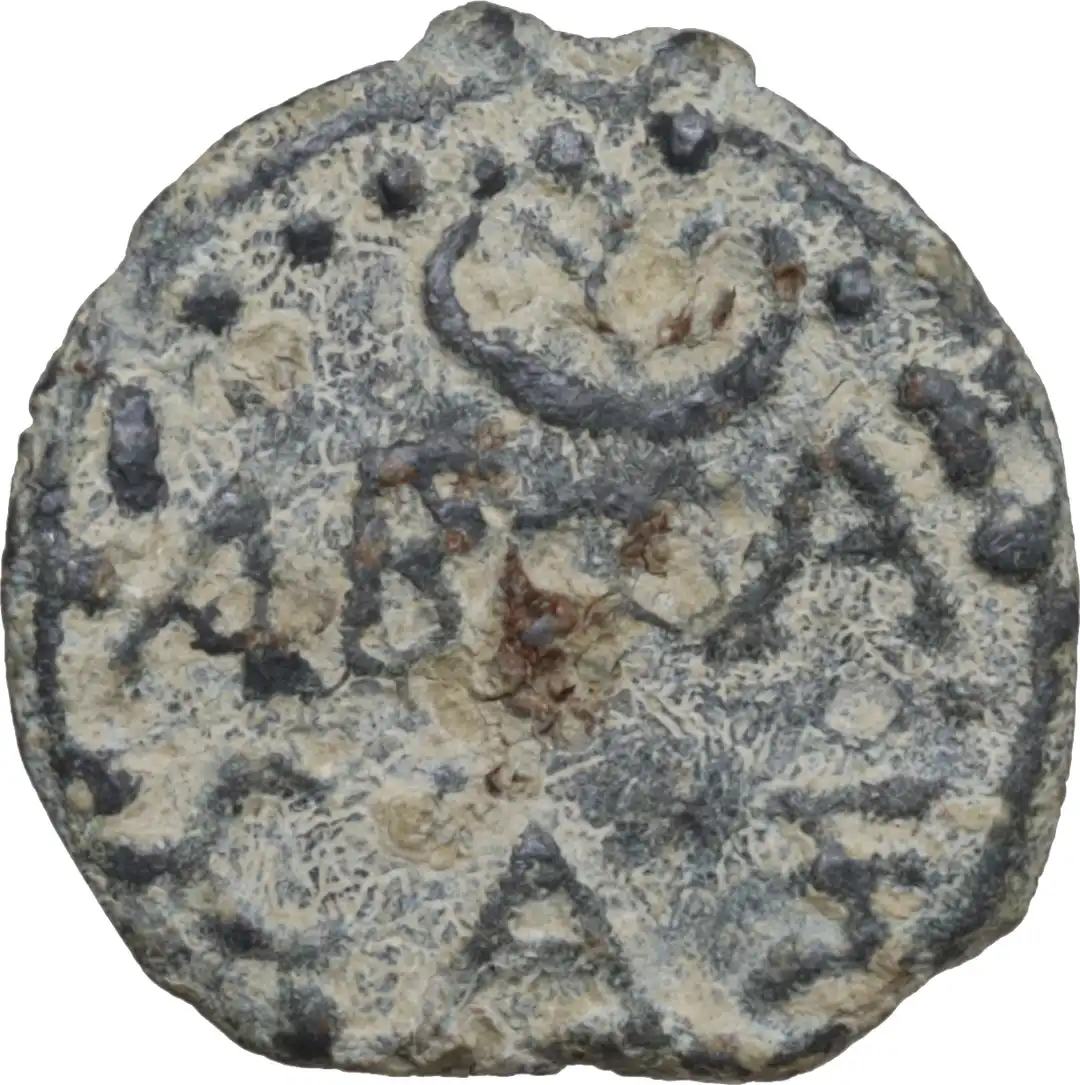









Lot 1028:
GNOSTIC ROMAN PLAQUE
Roman period, c. 3rd - 4th century AD.
Lead plaque with on one side: IAⲰ. Abrasax facing, with the head of a rooster and snakes for legs, holding a whip in his right hand and a shield in his left. On the other: ABPA-CAX. Star-in-crescent.
Diameter: 18.5 mm. VF. So-called Gnostic amulets not only survive in the form of hardstone gems: they were also produced in the form of lead pendants, rings, beads and tesserae to meet the needs of less wealthy clients. The worship of the ancient demon Abrasax (or Abraxas) rose to great prominence in Roman times through the teachings of the Christian Gnostic Basilides of Alexandria (circa 85-145 AD), who called Abrasax the 'great archon' and the first of the 365 Gnostic Aeons. The etymology of his name is still unclear: it may go back to the Egyptian words 'abrak' and 'sax', translating as 'the honorable and hallowed word', but it is noteworthy that the letters of his name, in Greek isopsephy, add up to 365, the amount of days in a solar year: Α = 1, Β = 2, Ρ = 100, Α = 1, Σ = 200, Α = 1, Ξ = 60, thus: 1+2+100+1+200+1+60 = 365. Basilides' followers believed, among other things, that Abrasax sent Christ as a ghost to the world, which lead to sharp refutations by Early Church Fathers such as Hippolytus of Rome, Clement of Alexandria and Eusebius of Caesarea. The popularity of Basilidianism was mostly restrained to Egypt, where a vivid Gnostic sect is attested in the 2nd-4th centuries, but its legacy still lives on today, as one compelling theory proclaims, in the famous magic word 'abracadabra!'.
Roman period, c. 3rd - 4th century AD.
Lead plaque with on one side: IAⲰ. Abrasax facing, with the head of a rooster and snakes for legs, holding a whip in his right hand and a shield in his left. On the other: ABPA-CAX. Star-in-crescent.
Diameter: 18.5 mm. VF. So-called Gnostic amulets not only survive in the form of hardstone gems: they were also produced in the form of lead pendants, rings, beads and tesserae to meet the needs of less wealthy clients. The worship of the ancient demon Abrasax (or Abraxas) rose to great prominence in Roman times through the teachings of the Christian Gnostic Basilides of Alexandria (circa 85-145 AD), who called Abrasax the 'great archon' and the first of the 365 Gnostic Aeons. The etymology of his name is still unclear: it may go back to the Egyptian words 'abrak' and 'sax', translating as 'the honorable and hallowed word', but it is noteworthy that the letters of his name, in Greek isopsephy, add up to 365, the amount of days in a solar year: Α = 1, Β = 2, Ρ = 100, Α = 1, Σ = 200, Α = 1, Ξ = 60, thus: 1+2+100+1+200+1+60 = 365. Basilides' followers believed, among other things, that Abrasax sent Christ as a ghost to the world, which lead to sharp refutations by Early Church Fathers such as Hippolytus of Rome, Clement of Alexandria and Eusebius of Caesarea. The popularity of Basilidianism was mostly restrained to Egypt, where a vivid Gnostic sect is attested in the 2nd-4th centuries, but its legacy still lives on today, as one compelling theory proclaims, in the famous magic word 'abracadabra!'.
Rufpreis € 100
Aktueller Preis € 100
Mindestgebot: € 110
Mindest Gebotserhöhung € 10
Bids: 1
Aktueller Preis € 100
Mindestgebot: € 110
Mindest Gebotserhöhung € 10
Bids: 1
Griechische Münzen (199)
Ancient and Medieval Asia (18)
Die Römische Republik (212)
Das Römische Reich (316)
Münzen der Völkerwanderungszeit (11)
Das Byzantinische Reich (19)
Lots (29)
Islamische Münzen (7)
Lead from the ancient world (3)
Weltmünzen (171)
Antiquitäten (61)
Ergebnisse PDF
Verkaufsbedingungen
Bid Increments
Lieferung
Meine Gebote
Beobachten
